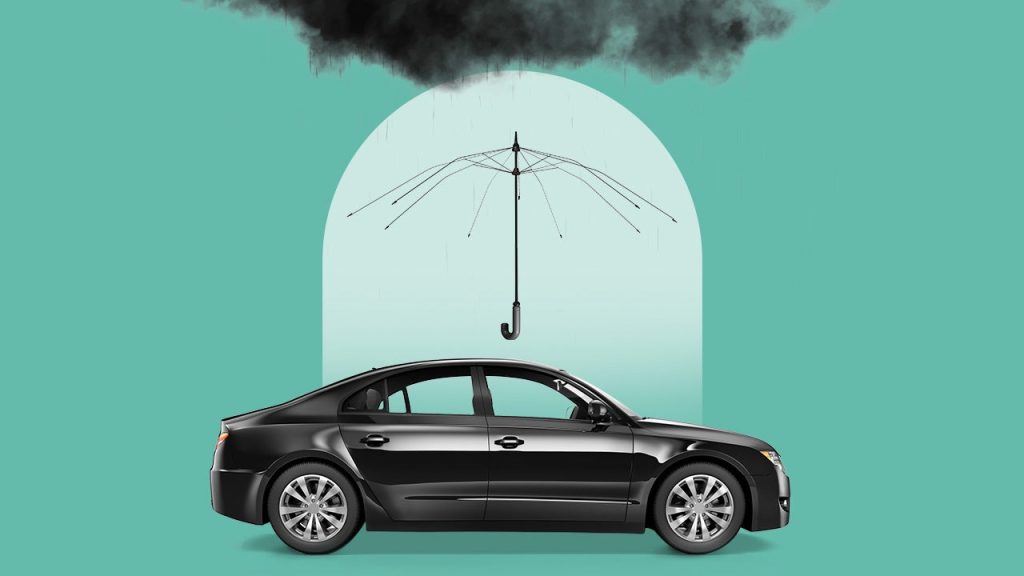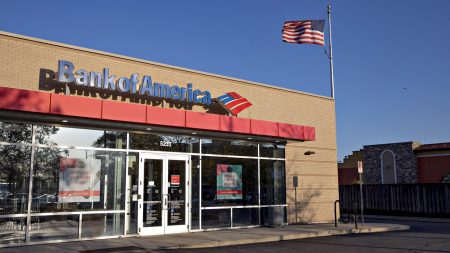Images by Getty Images; Illustration by Bankrate
Key takeaways
- Any period during which you don’t have an active car insurance policy is considered a lapse in coverage.
- How much a lapse in car insurance affects premiums depends on the nature and length of the lapse, but you could see your rates go up by an average of $75 to $250 per year.
- Staying on top of payments and communicating regularly with your insurance company could help you avoid an insurance lapse.
How a lapse in insurance affects car insurance rates
A lapse in car insurance can cause your insurance rates to go up when your policy is reinstated or when you purchase a new policy. How much a lapse in car insurance affects your premium can vary, but the impact is typically small, with an average increase of $251 per year for full coverage policies and $76 for minimum coverage policies.
| Before a lapse | After a lapse | |
| Avg. annual minimum coverage | $767 | $843 |
| Avg. annual full coverage | $2,638 | $2,889 |
Lapses impact rates because they factor into insurers’ risk calculations. While a long history of continuous coverage is seen as a positive sign, lapses raise a wide range of concerns for insurers. A lapse could mean that you haven’t driven a car in a while, that you may have been driving uninsured or that you could have missed payments on your previous insurance.
In other words, an insurance lapse makes you a big question mark for insurers. The good news: if you maintain continuous coverage for at least six months, the impact of your lapse will typically go away. Establishing six months of insurance history is generally enough to give insurers a clearer and more favorable picture of your risk.
Discounts you could lose after a lapse
Another way that an insurance lapse can impact your rates is by disqualifying you for discounts based on your prior insurance history. These discounts include:
- Continuous coverage discounts: Many insurers offer a discount to customers who have a previous insurance history of at least six months. If your insurance used to include this discount, you might see a compounded increase in your premium because you lost the discount.
- Loyalty discounts: Some insurers provide increasing discounts to customers who stay with the same company over a period of years. In some cases, a lapse in coverage could affect these discounts.
What is a lapse in insurance
A lapse in insurance refers to any period during which you don’t have insurance coverage. This can describe a wide variety of scenarios:
- You missed payments and your insurer canceled your policy: Maybe you ran into a financial rough patch; maybe you set up autopay and forget to update your account when your credit card changed; maybe you missed a cancellation email. If you fall behind on payments, your insurer can cancel your policy and leave you with an insurance lapse.
- You switched companies and left a gap between policies. When you switch car insurance companies, it’s important to schedule your new coverage to start the same day that your old policy ends. If you’re off by even a day, you’ll be in an insurance lapse.
- You didn’t own a car: Let’s say you sold your car and went car-free for a while. Unless you purchase a non-owner policy, you’ll be considered to be in an insurance lapse — even though you didn’t have a vehicle to insure.
Despite the differences in these scenarios, they all come down to the same thing. Going without car insurance coverage for any period of time — from a single day to multiple years — is considered a lapse and can affect your insurance rates in the future.
Is there a grace period before an insurance lapse?
In some cases, you may have a grace period during which your insurance lapse won’t affect your premiums. Because grace period policies vary significantly from insurer to insurer and may be impacted by state laws, there’s no universal length for that grace period.
If you’ve just realized that your insurance has lapsed, reach out to your insurance company. You may want to ask about a grace period and see if you can reinstate the policy without a rate increase by making an immediate payment.
Penalties of a car insurance lapse
A lapse in coverage can have significant penalties, depending on the length of the lapse, the circumstances that led to it and what transpired during the period when you didn’t have coverage.
If your car insurance lapse was due to not owning a vehicle, the primary penalty will be an increased rate the next time you need to buy coverage. In most cases, this penalty is temporary and may not be significant, but you may choose to buy non-owner coverage while you don’t own a car in order to avoid the inevitable rate hike.
If your insurance lapses while you own a car, you’re likely to face penalties beyond the insurance increase. These could include:
- Denial of claims: If you file a claim for an incident that took place while your coverage was lapsed, you can expect to have that claim denied, leaving you to cover the cost of the incident out of pocket.
- Fines: If you drove your car while your insurance coverage was lapsed, you could face steep fines from your state.
- License and/or registration suspension: Driving without insurance is a serious offense that can lead to loss of driving privileges in some states.
- Force placed insurance: If your insurance lapses while your car is financed, your lender can purchase insurance on your behalf and send you the bill. This is called force-placed insurance, and it is typically more expensive.
- Marks on your driving record: If the DMV records that you drove without insurance during a lapse, it puts a mark on your driving record, which can impact your insurance rates going forward.
- Denial of coverage: Depending on the circumstances of your insurance lapse, some companies may reject your application when you go to purchase a new policy, leaving you with fewer options.
Cheapest car insurance after a lapse in car insurance
Increased insurance rates can follow you after a coverage lapse, but you may not be stuck paying steep premiums. Bankrate analyzed average premium data from Quadrant Information Services to find the cheapest auto insurance carriers for customers with an insurance lapse.
Cheapest minimum coverage car insurance after a lapse in coverage
One strategy to avoid steep rates following a coverage lapse is to stick to state minimum coverage. While this level of coverage could leave you underinsured in the event of an accident and is typically not recommended by insurance professionals, it may be an effective temporary measure to help your insurance profile recover from a significant coverage lapse.
The table below compares average rates before and after a coverage lapse for top-rated national and regional auto carriers.
| Company | Avg. monthly minimum coverage premium before a lapse | Avg. monthly minimum coverage premium after a lapse |
| Auto-Owners | $40 | $46 |
| Geico | $47 | $50 |
| Travelers | $49 | $51 |
| USAA | $50 | $53 |
| Mercury | $57 | $58 |
Cheapest full coverage car insurance after a lapse in coverage
In most cases, minimum coverage won’t provide sufficient financial protection in the event of an accident. In addition, if your vehicle is financed, your lender likely requires you to maintain comprehensive and collision coverage. In this case, Bankrate’s analysis identified a different crop of insurers as the cheapest options for the best car insurance after a lapse in coverage.
| Company | Avg. monthly full coverage premium before a lapse | Avg. monthly full coverage premium after a lapse |
| USAA | $158 | $167 |
| Farm Bureau | $171 | $171 |
| Auto-Owners | $153 | $176 |
| Erie | $180 | $180 |
| Nationwide | $170 | $187 |
How to resolve a lapse in coverage
Once you realize your auto insurance has lapsed, taking the following steps may help you get back on track:
- Call your insurance agent: Your first call should always be to your insurance company. If the lapse happened recently, you may be able to make a payment over the phone and reinstate the policy with minimal impact to your rates. Ask your agent if the insurer offers a grace period for lapsed policies.
- Shop around: If you’re not able to reinstate your previous policy — or if you weren’t able to avoid a rate increase — you may want to compare quotes from other insurers to find more affordable coverage in the wake of your lapse.
- Avoid driving: Until you have auto insurance coverage in force, don’t drive your vehicle. Driving without insurance is a crime and could compound the impact of your coverage lapse. Carpooling, using public transit or opting for ridesharing services can help you ride out an insurance lapse without breaking the law.
How to prevent a lapse in car insurance coverage
The best line of defense against a car insurance lapse is preparation. The strategies below can help you avoid a future lapse in coverage:
-
Keep track of communication from your insurance company: Missing a cancellation notice is a common reason for falling into a coverage lapse. Knowing your payment schedule and policy renewal date and watching for any emails or letters from your insurer can help you avoid this trap.
-
Update payment information when necessary: If you have a new credit card number or a new bank account, take the time to update your payment information with your insurance company to avoid missed payments and a possible lapse.
-
Schedule any new policies carefully: If you switch insurers, take care to schedule your new coverage to start on the same day your old coverage expires.
-
Consider coverage options while you don’t own a car: If you plan to go without a car for an extended time, it may be worth looking into insurance options — even though you won’t be driving. If you’re selling your car, a non-owner policy could help you avoid high rates in the future. If you’re keeping your car but don’t plan to drive for an extended time, ask about storage insurance options that could reduce your payments while maintaining continuous coverage.
-
Review your car insurance budget regularly: An auto insurance premium that doesn’t fit into your monthly or annual budget is a recipe for financial trouble — and potentially for a future lapse. Whenever your policy renews, take the time to estimate how your premium fits into your budget and shop around for more affordable coverage if necessary.
Bankrate’s insight
Most people want to minimize the time they spend thinking about insurance, but taking a “set it and forget it” approach to your coverage could lead to serious consequences. A proactive and involved approach to your car insurance can help you avoid lapses and simplify your insurance life.
Frequently asked questions
Methodology
Bankrate utilizes Quadrant Information Services to analyze January 2025 rates for all ZIP codes and carriers in all 50 states and Washington, D.C. Rates are weighted based on the population density in each geographic region. Quoted rates are based on a single, 40-year-old male and female driver with a clean driving record, good credit and the following full coverage limits:
- $100,000 bodily injury liability per person
- $300,000 bodily injury liability per accident
- $50,000 property damage liability per accident
- $100,000 uninsured motorist bodily injury per person
- $300,000 uninsured motorist bodily injury per accident
- $500 collision deductible
- $500 comprehensive deductible
To determine minimum coverage limits, Bankrate used minimum coverage that meets each state’s requirements. Our base profile drivers own a 2023 Toyota Camry, commute five days a week and drive 12,000 miles annually. Bundling and paperless billing discounts are applied.
These are sample rates and should only be used for comparative purposes. Your quotes will differ.
If otherwise specified, the base profile has been modified with the following driver characteristics:
Read the full article here









